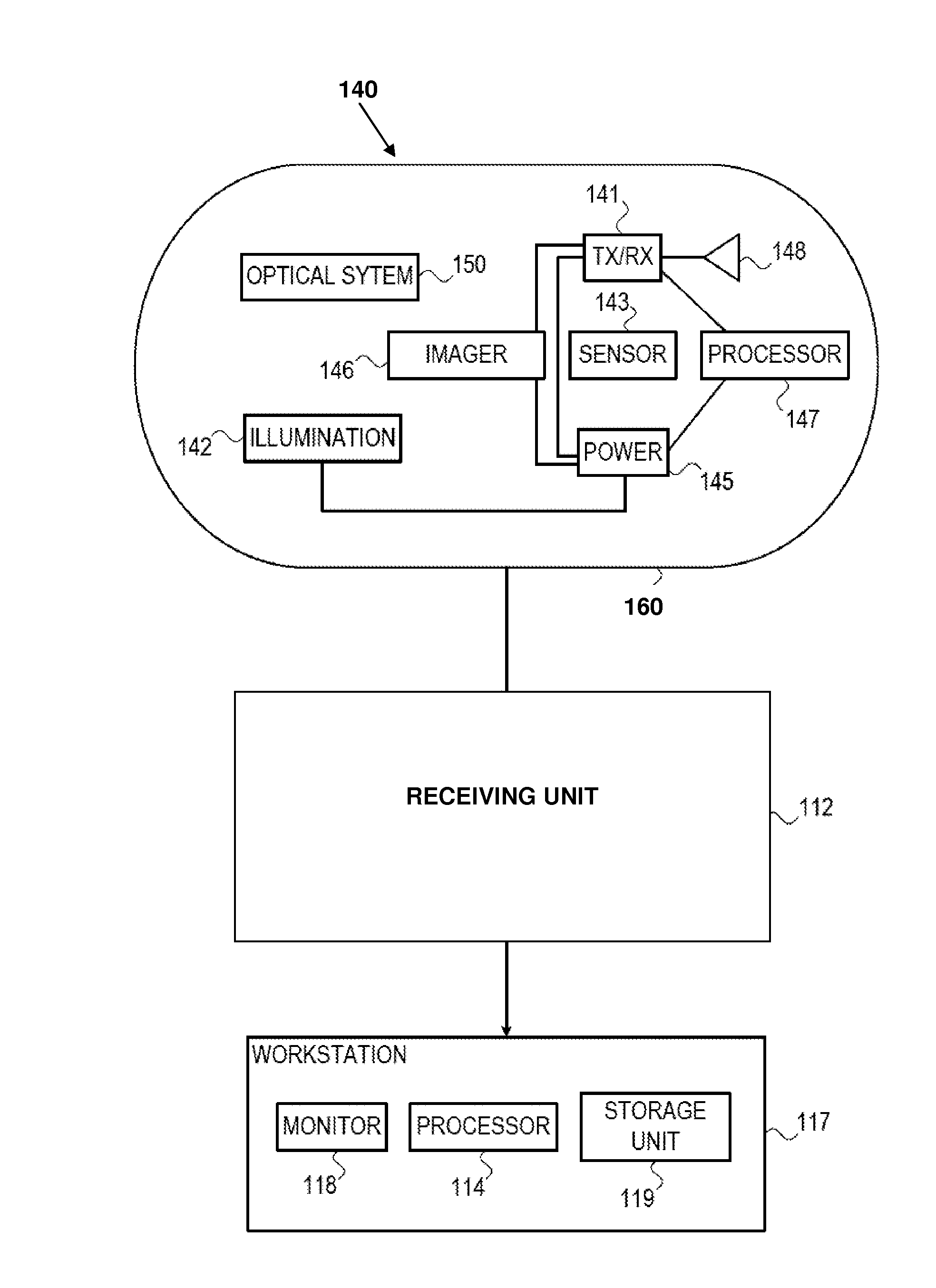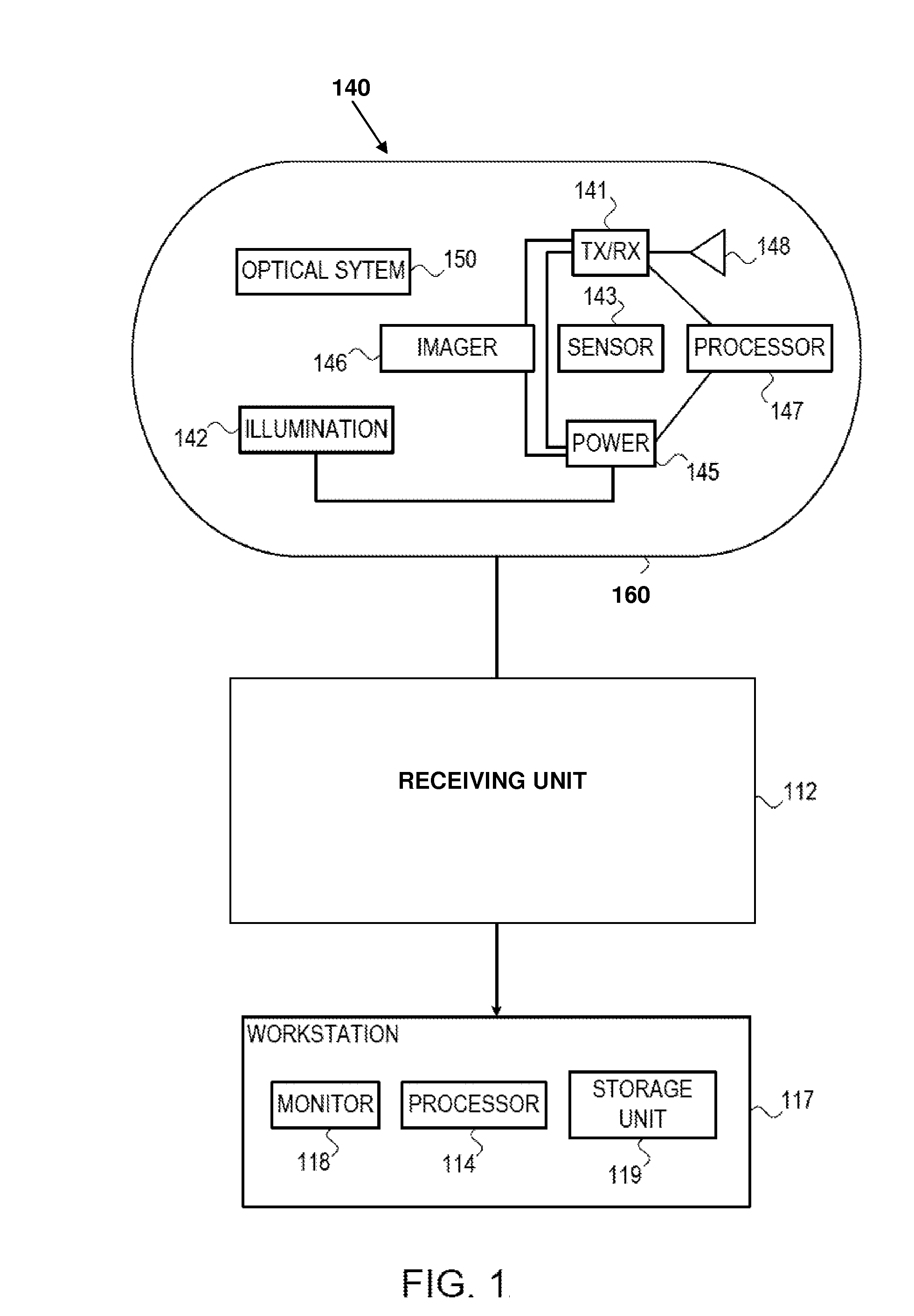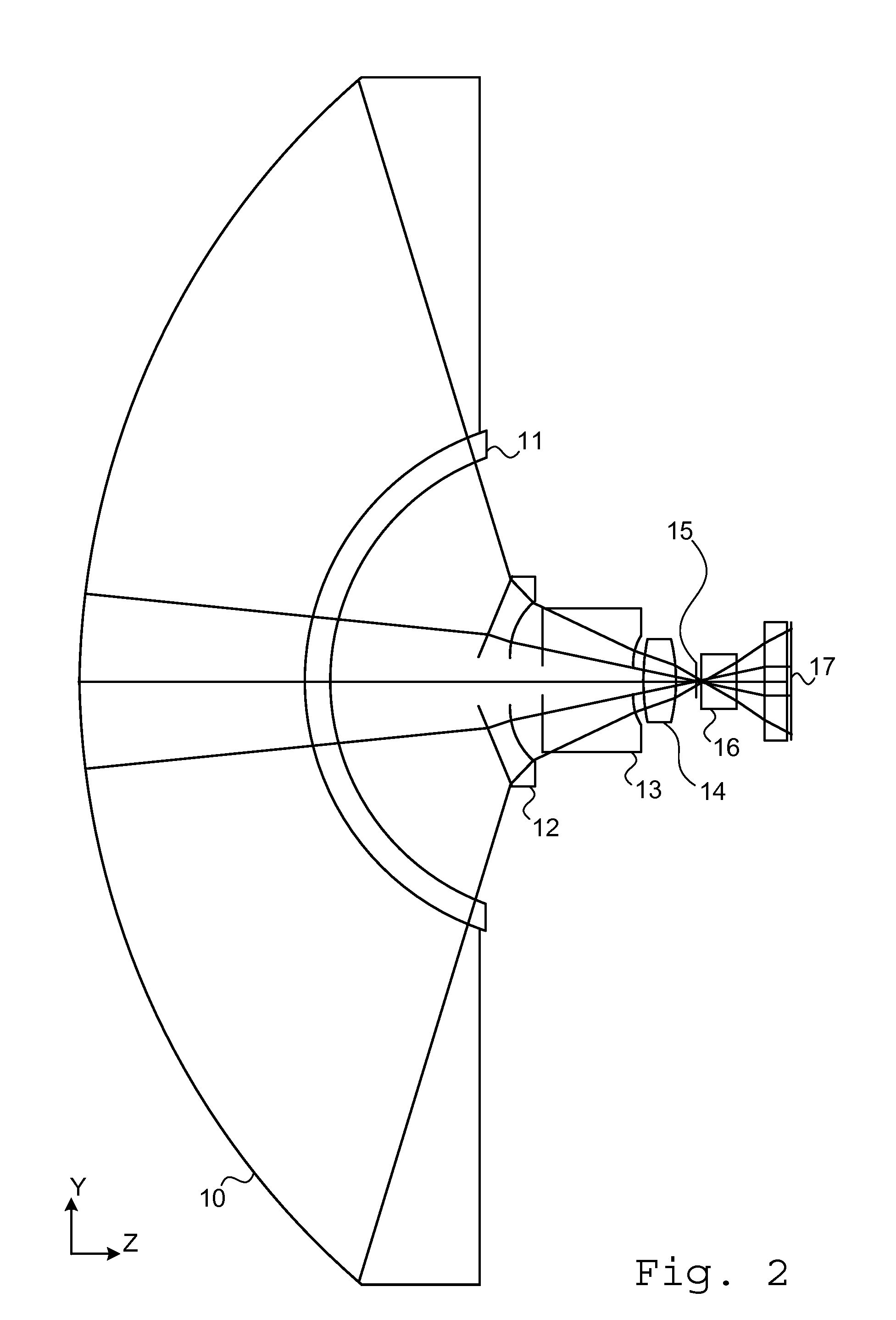In-vivo imaging device with double field of view and method for use
a technology of in-vivo imaging and double field of view, applied in the field of imaging systems, can solve the problems of cost effectiveness, blockage of the region between 5° and 10°, and achieve the effect of high-quality imag
- Summary
- Abstract
- Description
- Claims
- Application Information
AI Technical Summary
Benefits of technology
Problems solved by technology
Method used
Image
Examples
examples
[0041]Reference is now made to Table I, which provides specifications and prescription data for one exemplary implementation of the low magnification, wide field of view section of an optical system such as is described in FIG. 2 of this application. Other implementations are possible. The results of the design iteration are given from the program output without rounding. This exemplary lens assembly contains 4 lenses and 3 elements without optical power, whose optical parameters have been optimized using the ZEMAX® optimization program. This exemplary system has been designed to provide a 130° total field of view. The effective focal length is 1.24823 mm, and the back focal length to the imager plane is 0.53858 mm. The total optical track length is 10.699 mm, and the paraxial working f / number is 5.51225. All dimensions are in mm.
TABLE ISurfaceTypeR ° C.ThicknessMaterialDiameterConic CoefficientOBJSTANDARD17.55Water26.778801EVENASPH5.926490.5Polycarb.11.02−0.11481212EVENASPH5.462233...
PUM
 Login to View More
Login to View More Abstract
Description
Claims
Application Information
 Login to View More
Login to View More - R&D
- Intellectual Property
- Life Sciences
- Materials
- Tech Scout
- Unparalleled Data Quality
- Higher Quality Content
- 60% Fewer Hallucinations
Browse by: Latest US Patents, China's latest patents, Technical Efficacy Thesaurus, Application Domain, Technology Topic, Popular Technical Reports.
© 2025 PatSnap. All rights reserved.Legal|Privacy policy|Modern Slavery Act Transparency Statement|Sitemap|About US| Contact US: help@patsnap.com



